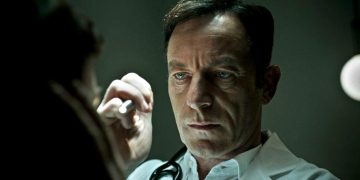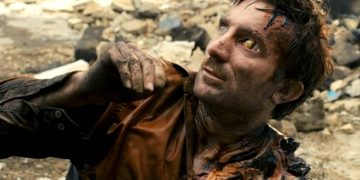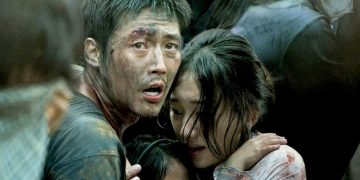We often recommend products we like. If you buy anything through our links, we may earn a commission at no extra cost to you.
Coming out of the global pandemic and still reeling from its effects, every disaster movie about a viral outbreak feels different in retrospect—like cautionary tales of doom that really could be.
Diseases, viruses, and sicknesses are terrifying for how quickly they can dismantle society and erode humanity. The best path to survival is care, caution, and the advice of experts, but it can be tough to bring humankind together on even those things.
When a plague sets in, very few are safe from its contagious spread. But there’s always a glimmer of hope, mostly stemming from the brave scientists who sacrifice their own lives to save others.
From gripping dramas to dreadful horrors, here are our picks for the best disease movies about pandemics that threaten the world.
Based on the José Saramago’s novel, Blindness centers on a city stricken by an epidemic of blindness. At the cusp of its spread is an afflicted doctor (Mark Ruffalo) and his wife (Julianne Moore). Soon, she stumbles upon a conspiracy to manipulate and control the afflicted.
Despite its overly safe execution, this Fernando Meirelles film shows the impact of an epidemic on the public. In following Moore’s character, we get a balance of political and social intrigue. But the scariest part? The power dynamics that eerily reflect today’s social climate.
Embers is set on a world that’s been struck with a killer virus that causes retrograde and anterograde amnesia. The film presents five connected stories about the survivors of the epidemic, who struggle in the dying landscape to recall their past memories or make new memories.
What makes Embers worth a look is its illustration of the epidemic’s aftermath. In our post-pandemic era, these stories—from the main couple to the mysterious woman with the dress—resonate. What we get is an overlooked yet unique indie film.
Real hysteria can come when overthinking whether someone is infected with a virus, which is sharply depicted in Carriers. Starring Chris Pine, this film follows four survivors trying to endure a post-apocalyptic environment while avoiding the growing threat of infection.
Horror and anxiety loom over the four leads, who all experience an underlying uneasiness that feels all too familiar now, effectively brought to life by a cast of young talents. Even if the ending hits low, Carriers brings true horror about the wrath of viruses.
Back in 2013, we got a fitting cinematic counterpart to The Walking Dead in this zombie blockbuster. World War Z follows Gerry Lane (Brad Pitt), who’s thrust into a desperate mission to find a cure against the zombie apocalypse. At every point, a zombie horde follows him.
Based on the very dense novel by Max Brooks, World War Z frustratingly leaves out a lot of great material in favor of a streamlined plot. Even so, it gave us several notable scenes and a worthwhile watch.
Pontypool has an interesting premise: shock-jock radio DJ Grant (Stephen McHattie) receives a report about a deadly outbreak that threatens their small Ontario town, with the origins of the contagious virus being specific words from the English language.
That setup makes for a clever script that raises the stakes for Grant’s radio station crew. Think of it like Orson Welles’s radio broadcast of H. G. Wells’s The War of the Worlds, except this one is an actual broadcast of real zombies ravaging their town.
With B-movie suspense and wit mixed in, Pontypool proves that words can literally hurt or even spread doom.
Here we have another pandemic about zombies, except this one’s much lighter and funnier than the aforementioned Pontypool. In Zombieland, we have a ragtag team of survivalists making their way across a post-apocalyptic America in search of sanctuary at a theme park.
Leading them is the gun-toting veteran Tallahassee (Woody Harrelson), and along for the ride are the meek Columbus (Jesse Eisenberg), the strong-willed Wichita (Emma Stone), and her plucky younger sister Little Rock (Abigail Breslin).
Zombieland is among the best zombie comedy movies ever made, chiefly for how it embraces its sense of fun and pokes at zombie movie clichés. This bloody riot even features a bloody cameo by Bill Murray!
From the bizarre mind of Terry Gilliam comes 12 Monkeys, his most successful film. Part time travel story and part apocalyptic thriller, 12 Monkeys follows convict James Cole (Bruce Willis), who’s sent back in time to trace the origins of a deadly virus.
Heavily inspired by the French featurette La Jetée, 12 Monkeys expands on its themes of memory, morality, and time. Grim as it may be, there’s always a ray of hope following Cole, and that makes for an engaging thrill ride of twists and turns while fighting the epidemic.
8. Flu (2013)
Back in 2013, South Korea gave us one of the most interesting pandemic disaster films of all time in Flu (also known as Gamgi).
This ensemble piece centers on a populated district in Seongnam that experiences an outbreak of an H5N1 strain, which throws the city into mayhem and causes the citizens to scramble for their lives.
Between its premise and its structure of interconnected stories, Flu feels a lot like South Korea’s answer to Contagion from two years prior. However, this film has more realistic depictions of a deadly virus epidemic and doubles down on the drama.
I Am Legend adapts the Richard Matheson novel of the same name (the same one used by The Omega Man) and follows virologist Robert Neville (Will Smith). He’s the last human left in New York, who’s attempting to find a cure against the virus that turns humans into mutants.
As a survival flick, it’s gripping to follow Neville and his German shepherd throughout abandoned New York. The post-apocalyptic thriller action is balanced with quiet moments as Neville strategizes to survive, making for a solid disease movie with sci-fi trappings.
What’s even scarier than a viral outbreak of zombies? How about a pandemic that turns people into bloodthirsty maniacs?
The Sadness is a gem of body horror from Taiwan. It follows a young couple Jim and Kat, residing in Taipei, who try to reunite after a massive outbreak causes the population to turn into mindless savages.
You might not expect it from the title, but The Sadness features nonstop blood and gore. It’s almost sadistic with how much the maniacs fawn over violence and depravity—and given how quickly they move, the entire film oozes menace and dread.
Director Rob Jabbaz knows how to push the limits of body horror in this amazing movie, resulting in lots of zombie-like misery.
28 Days Later is mostly known for the scene where Cillian Murphy’s Jim is in scrubs and walking along an abandoned London bridge during an otherwise normal morning sunrise. But, of course, there’s more to the scene with its unpinning of zombie-inspired horror.
Directed by Danny Boyle, this horror flick centers on Jim, who wakes up from a coma only to find a transformed London—one that’s been ravaged by a disease that turns people mad.
This highly-contagious, aggression-inducing virus makes every scene a skin-crawling one. Then again, it’s not just the infected that fills this post-apocalyptic world with danger. Humans are often the worst.
One of the most fascinating facts about the disaster movie Outbreak is that a real-life virus epidemic took place in Zaire after it was released. As it turns out, Outbreak was pretty spot-on with its depiction of protocols taken by governments during actual virus outbreaks.
The film follows a group of medical and military officials as they try to contain an Ebola-like virus that starts in Zaire and ends up in California. The cast is led by Dustin Hoffman, Rene Russo, Morgan Freeman, and Donald Sutherland.
While it did take several liberties with the science involved, Outbreak is one of the definitive movies about pandemics of all time.
Back to South Korea, we got one of the greatest zombie blockbusters ever made with Train to Busan. The premise may sound like a gimmick—a high-speed train from Seoul to Busan is overtaken by zombies—but there’s a surprising amount of depth here.
At the center of the mayhem is absentee father Seok-woo (Gong Yoo) who does whatever he can to protect his daughter Su-an (Su-an Kim).
The success of Train to Busan comes down to it giving audiences what they really want in a disaster movie: a balance of carnage and humanity. More than just a disease movie, Train to Busan is essentially a father-daughter story that’s guided by admirable characters.
Based on the Michael Crichton novel, The Andromeda Strain involves a viral organism of extraterrestrial origin and scientists investigating that alien strain but struggling to contain the organism—which adapts to the environment and eventually becomes deadly.
To this day, many in the scientific community consider the film one of the most accurate portrayals of virus containment, from studying the specimen to planning how to stop its spread.
Having such a tight focus on the frontline scientists of this viral outbreak is a noble one that amplifies the sense of fear and paranoia.
Of all the disease movies on this list, Contagion is most representative of our current times. At release, it was praised as a competent thriller from Steven Soderbergh. But now? Many view the film as the perfect model of that pandemic era we all went through.
Like Soderbergh’s other works, Contagion follows multiple storylines—from health officials to ordinary citizens to conspiracy theorists—during the outbreak of a contagious disease. In every storyline, there’s no escaping the horrors of this virus.
In the end, Contagion is a drama-laden film that acts as a harrowing cautionary tale, making it one of the most important movies about pandemics worth watching.







